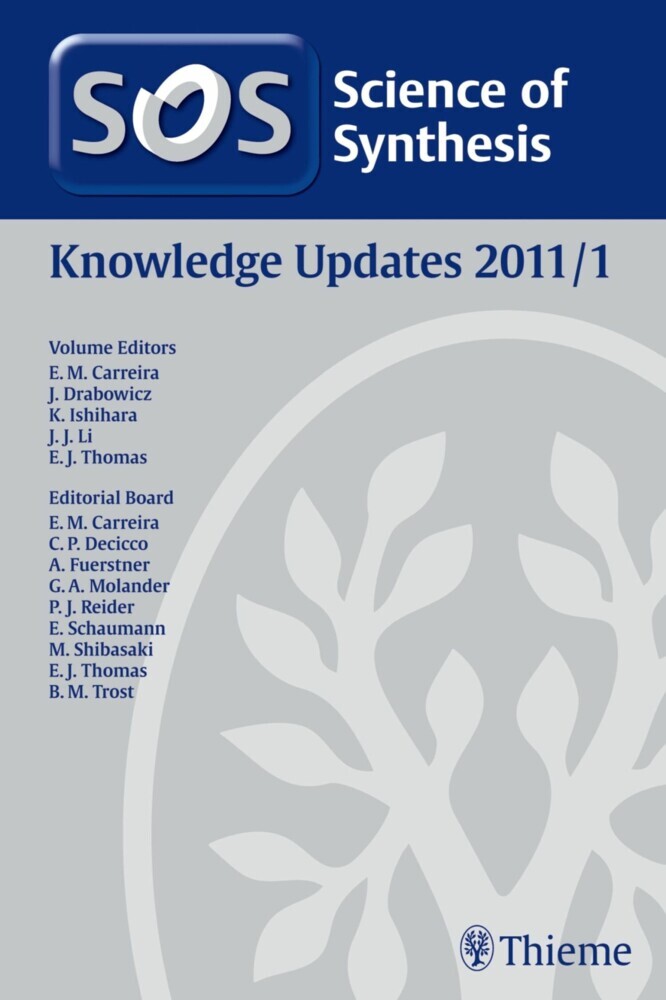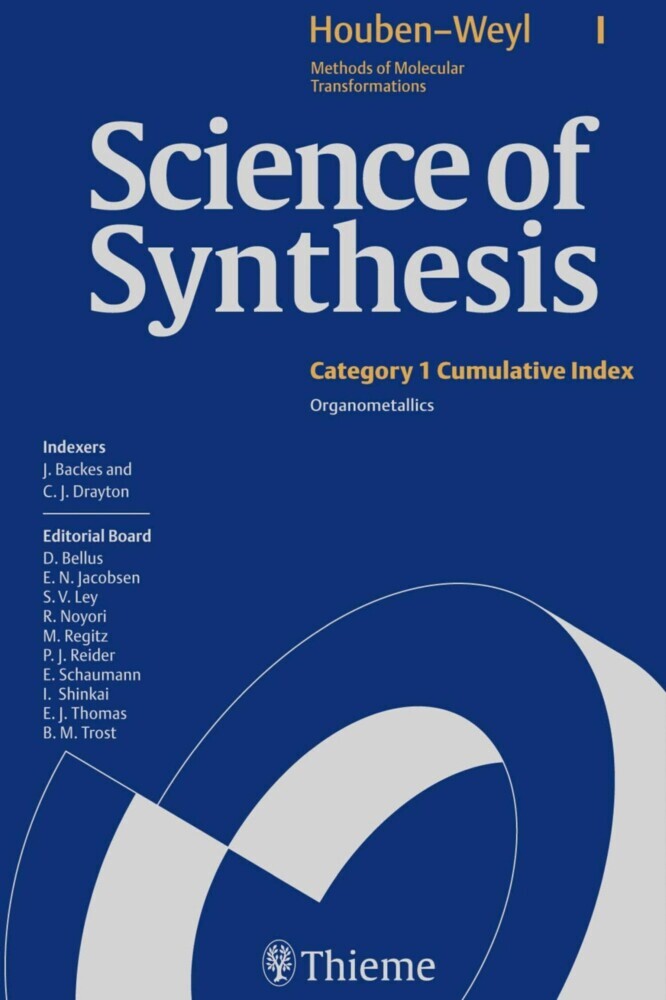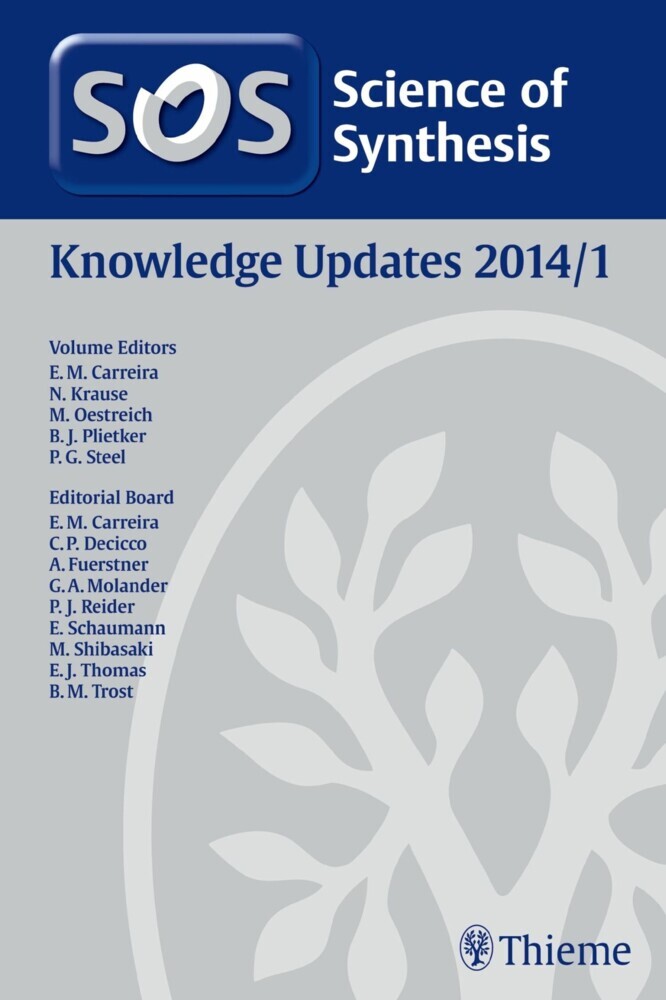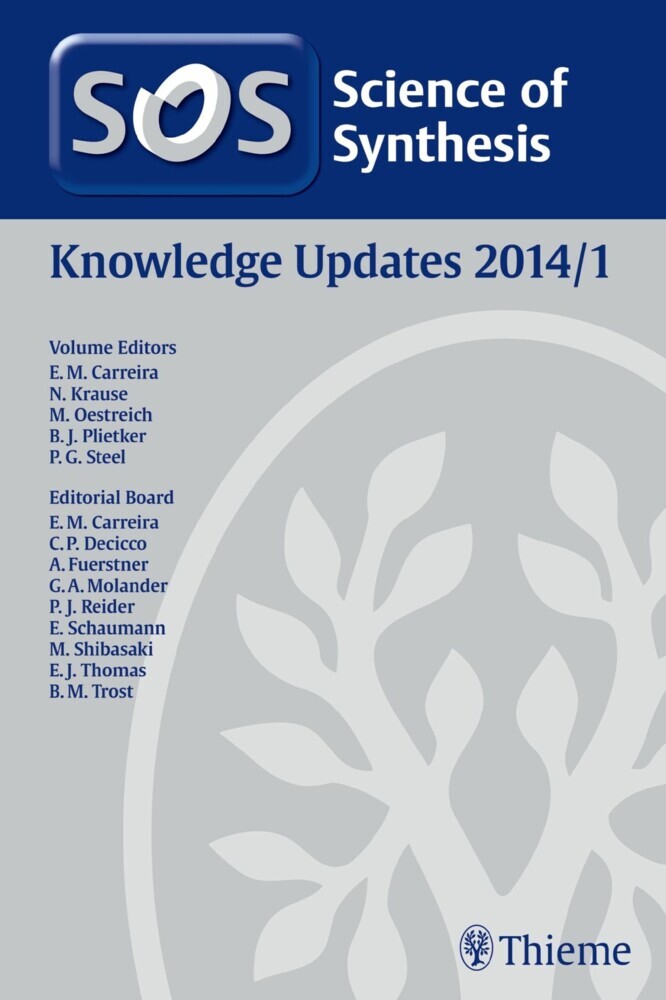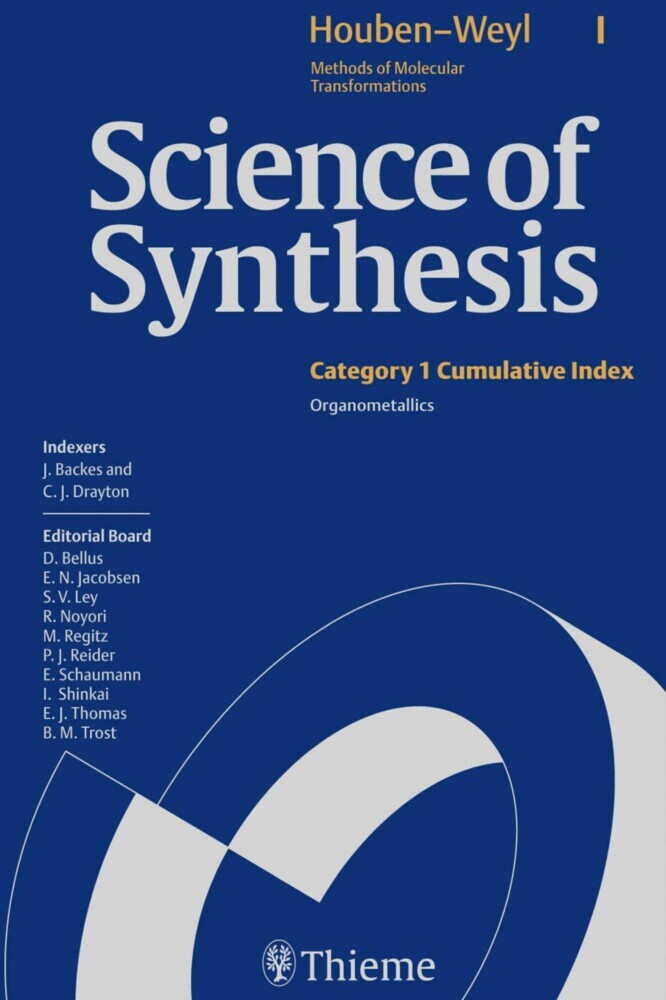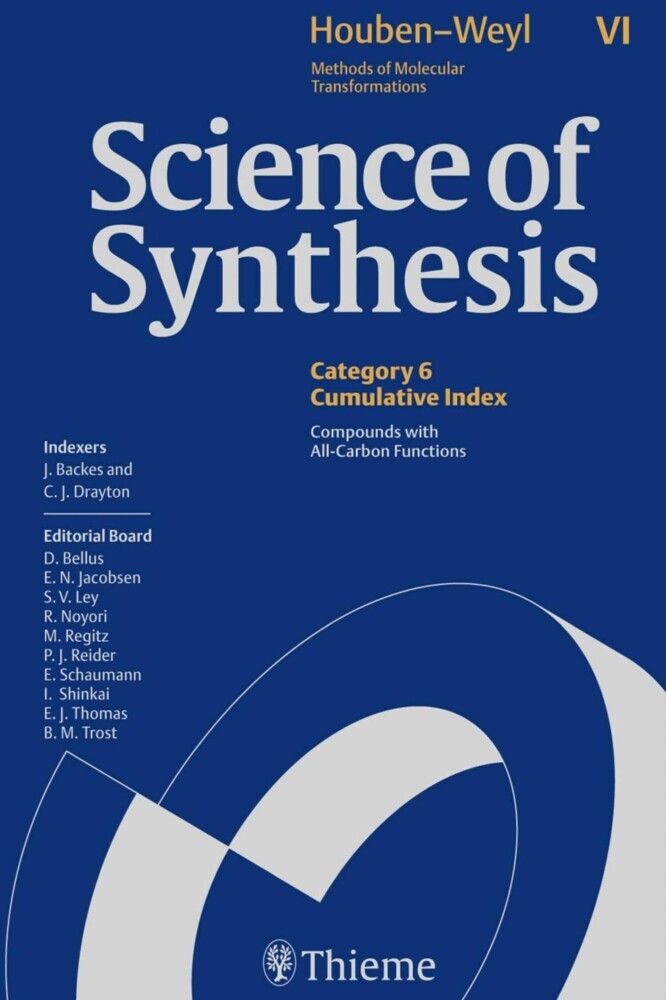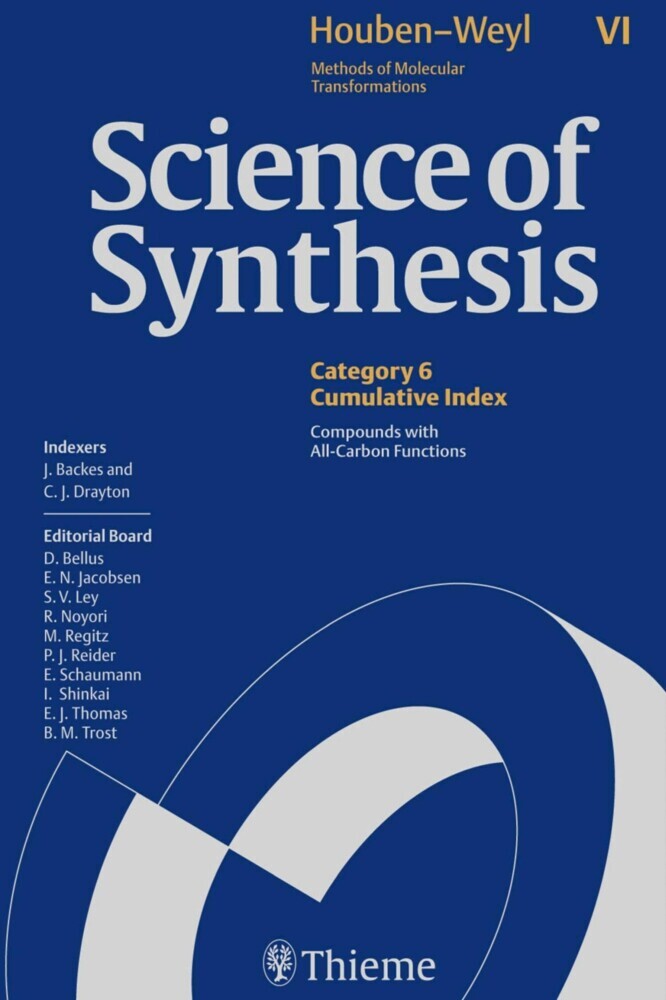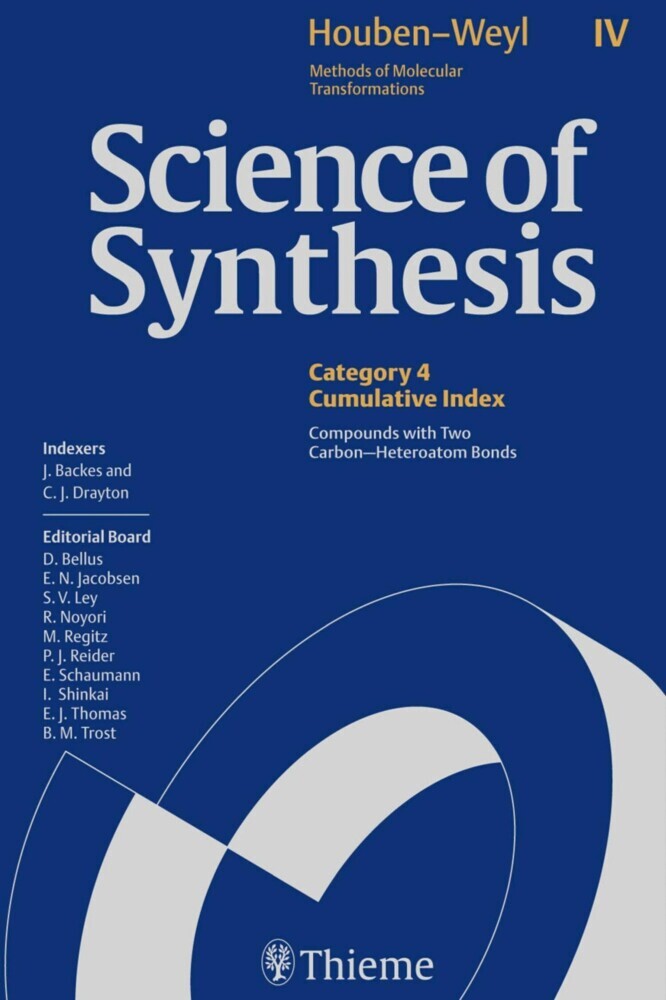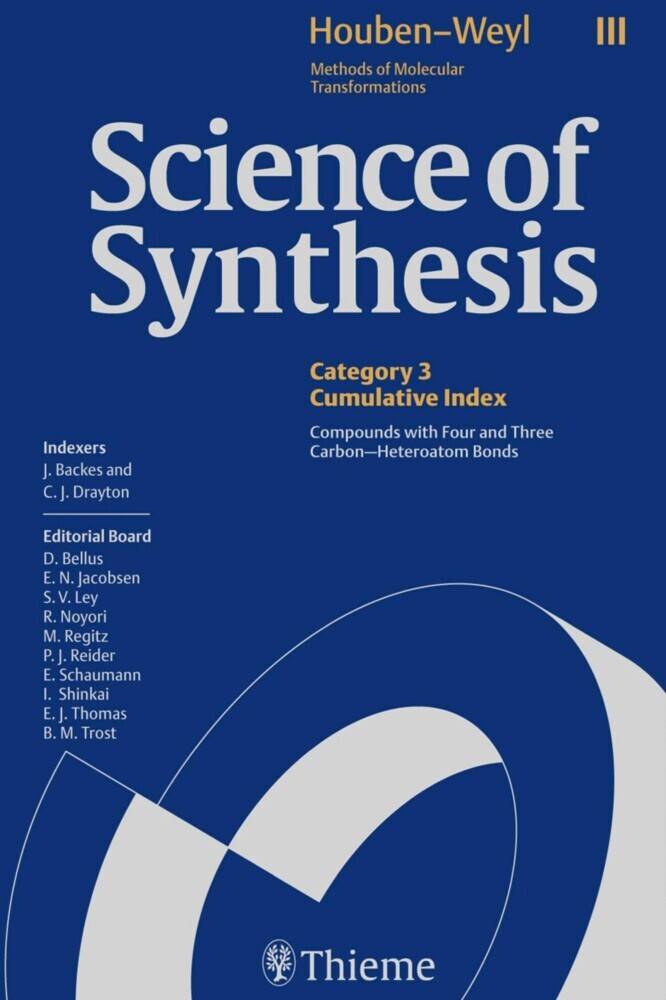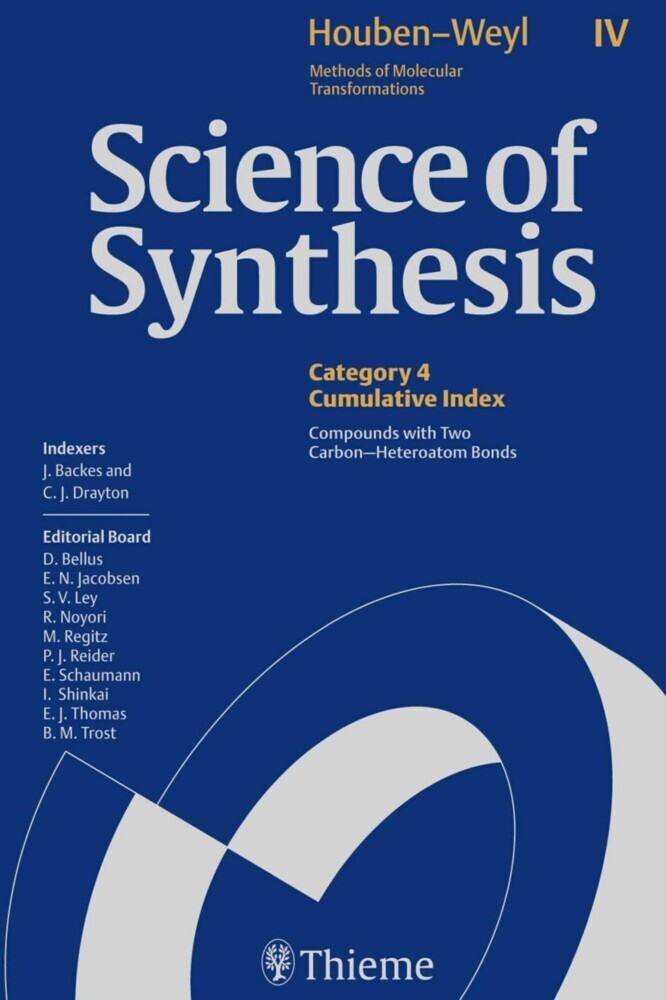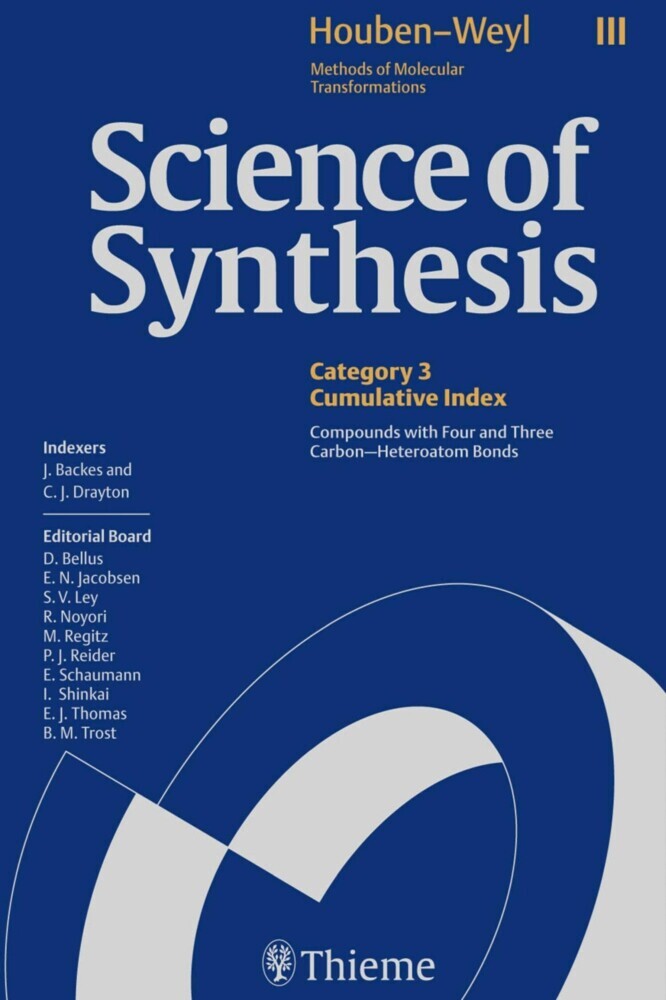Science of Synthesis Knowledge Updates 2011 Vol. 1. Vol.1
The Science of Synthesis Editorial Board,together with the volume editors and authors, is constantly reviewing the whole field of synthetic organic chemistry as presented in Science of Synthesis and evaluating significant developments in synthetic methodology. Four annual volumes updating content across all categories ensure that you always have access to state-of-the-art synthetic methodology.
Content of this volume: Dialkyl- and Diarylmagnesiums, 1H- and 2H-Indazoles, Quinolizinium Salts and Benzo Analogues, 1,2-Diselenins, 1,4-Diselenins, Pyrimidines, Acyclic Dialkyl Selenoxides and Derivatives.
1;Science of Synthesis: Knowledge Updates 2011/1;1 1.1;Title page;5 1.2;Imprint;7 1.3;Preface;8 1.4;Abstracts;10 1.5;Overview;14 1.6;Table of Contents;16 1.7;Volume 7: Compounds of Groups 13 and 2 (Al, Ga, In, Tl, Be ··· Ba);34 1.7.1;7.6 Product Class 6: Magnesium Compounds;34 1.7.1.1;7.6.15 Product Subclass 15: Dialkyl- and Diarylmagnesiums;34 1.7.1.1.1;Synthesis of Product Subclass 15;34 1.7.1.1.1.1;7.6.15.1 Method 1: Disproportion of Grignard Reagents;34 1.7.1.1.1.1.1;7.6.15.1.1 Variation 1: Reaction of Magnesium Metal with 2-Chlorobutane;35 1.7.1.1.1.2;7.6.15.2 Method 2: Reaction of Grignard Reagents with Organolithium Reagents;35 1.7.1.1.1.2.1;7.6.15.2.1 Variation 1: Reaction of Activated Magnesium Halides with Organolithium Reagents;36 1.7.1.1.1.3;7.6.15.3 Method 3: Reaction of Diorganomercury(II) Compounds with Magnesium Metal;37 1.7.1.1.1.4;7.6.15.4 Method 4: Reaction of Alkenes and Activated Magnesium Hydride;37 1.7.1.1.1.5;7.6.15.5 Method 5: Reaction of 1,3-Dienes with Activated Magnesium Metal;38 1.7.1.1.2;Applications of Product Subclass 15 in Organic Synthesis;39 1.7.1.1.2.1;7.6.15.6 Method 6: Reactions of Organomagnesium Compounds;39 1.7.1.1.2.2;7.6.15.7 Method 7: Reactions Involving Diorganomagnesium Compounds Obtained from 1,3-Dienes;42 1.7.1.1.2.3;7.6.15.8 Method 8: Catalysts Derived from Diorganomagnesium Compounds;43 1.7.1.1.2.4;7.6.15.9 Method 9: Miscellaneous Reactions of Diorganomagnesium Compounds;44 1.8;Volume 12: Five-Membered Hetarenes with Two Nitrogen or Phosphorus Atoms;48 1.8.1;12.2 Product Class 2: 1H- and 2H-Indazoles;48 1.8.1.1;12.2.5 1H- and 2H-Indazoles;48 1.8.1.1.1;12.2.5.1 Synthesis by Ring-Closure Reactions;49 1.8.1.1.1.1;12.2.5.1.1 By Annulation to an Arene;49 1.8.1.1.1.1.1;12.2.5.1.1.1 By Formation of One N--N and One N--C Bond;49 1.8.1.1.1.1.1.1;12.2.5.1.1.1.1 Fragments N--Arene--C and N;49 1.8.1.1.1.1.1.1.1;12.2.5.1.1.1.1.1 Method 1: From 2-Alkylanilines by Diazotization or Nitrosation;49 1.8.1.1.1.1.1.1.2;12.2.5.1.1.1.1.2 Method 2: From 2-Acylnitroarenes;50 1.8.1.1.1.1.2;12.2.5.1.1.2 By Formation of Two N--C Bonds;51 1.8.1.1.1.1.2.1;12.2.5.1.1.2.1 Fragment Arene--C and N--N;51 1.8.1.1.1.1.2.1.1;12.2.5.1.1.2.1.1 Method 1: From 1-Acyl-2-haloarenes and Hydrazine;51 1.8.1.1.1.1.2.1.2;12.2.5.1.1.2.1.2 Method 2: From 1-Alkyl-2-haloarenes and Hydrazines;53 1.8.1.1.1.1.2.1.3;12.2.5.1.1.2.1.3 Method 3: From 2-Arylidenecyclohexanones and Hydrazines;54 1.8.1.1.1.1.2.1.4;12.2.5.1.1.2.1.4 Method 4: From 2-Acylcyclohexanones and Hydrazine;55 1.8.1.1.1.1.2.1.5;12.2.5.1.1.2.1.5 Method 5: From 2-Acylhydroxyarenes and Hydrazine;56 1.8.1.1.1.1.2.1.6;12.2.5.1.1.2.1.6 Method 6: From [2-(Halomethyl)aryl]zincs and Arenediazonium Salts;56 1.8.1.1.1.1.2.2;12.2.5.1.1.2.2 Fragments Arene and N--N--C;57 1.8.1.1.1.1.2.2.1;12.2.5.1.1.2.2.1 Method 1: From Benzyne and Diazo Compounds;57 1.8.1.1.1.1.2.2.1.1;12.2.5.1.1.2.2.1.1 Variation 1: Using Acyl Diazomethanes;58 1.8.1.1.1.1.2.2.1.2;12.2.5.1.1.2.2.1.2 Variation 2: Using (Trimethylsilyl)diazomethane;59 1.8.1.1.1.1.2.2.1.3;12.2.5.1.1.2.2.1.3 Variation 3: Using Sydnones;61 1.8.1.1.1.1.2.2.1.4;12.2.5.1.1.2.2.1.4 Variation 4: Using Azomethine Imides;61 1.8.1.1.1.1.2.2.2;12.2.5.1.1.2.2.2 Method 2: From Quinones and Arylhydrazones;62 1.8.1.1.1.1.2.2.3;12.2.5.1.1.2.2.3 Method 3: From Nitroarenes or Nitroalkenes and Hydrazones;63 1.8.1.1.1.1.3;12.2.5.1.1.3 By Formation of One N--C and One C--C Bond;63 1.8.1.1.1.1.3.1;12.2.5.1.1.3.1 Fragments N--N--Arene and C;63 1.8.1.1.1.1.3.1.1;12.2.5.1.1.3.1.1 Method 1: From Arylhydrazines and Acyl Derivatives;63 1.8.1.1.1.1.3.1.2;12.2.5.1.1.3.1.2 Method 2: From Arylhydrazones;65 1.8.1.1.1.1.3.1.3;12.2.5.1.1.3.1.3 Method 3: By Carbonylation;65 1.8.1.1.1.1.4;12.2.5.1.1.4 By Formation of One N--N Bond;65 1.8.1.1.1.1.4.1;12.2.5.1.1.4.1 Fragment N-Arene-C--N;65 1.8.1.1.1.1.4.1.1;12.2.5.1.1.4.1.1 Method 1: From 2-Acylamino- or 2-Acylazidoarenes;65 1.8.1.1.1.1.4.1.1.1;12.2.5.1.1.4.1.1.1 Variation
Carreira, Erick M.
Carreira, Erick M.
| ISBN | 9783131787118 |
|---|---|
| Artikelnummer | 9783131787118 |
| Medientyp | E-Book - PDF |
| Copyrightjahr | 2014 |
| Verlag | Georg Thieme Verlag KG |
| Umfang | 572 Seiten |
| Sprache | Englisch |
| Kopierschutz | Digitales Wasserzeichen |

